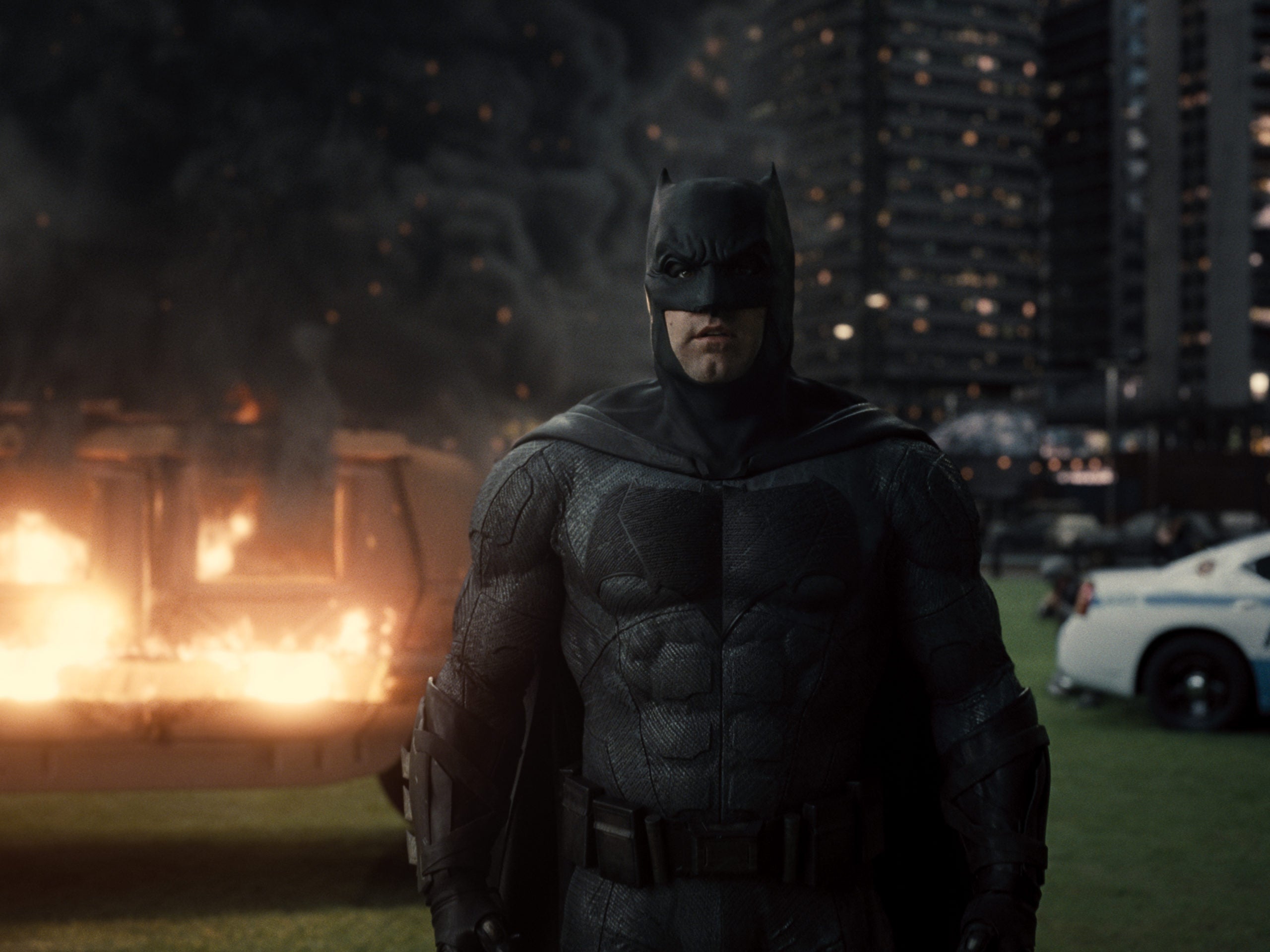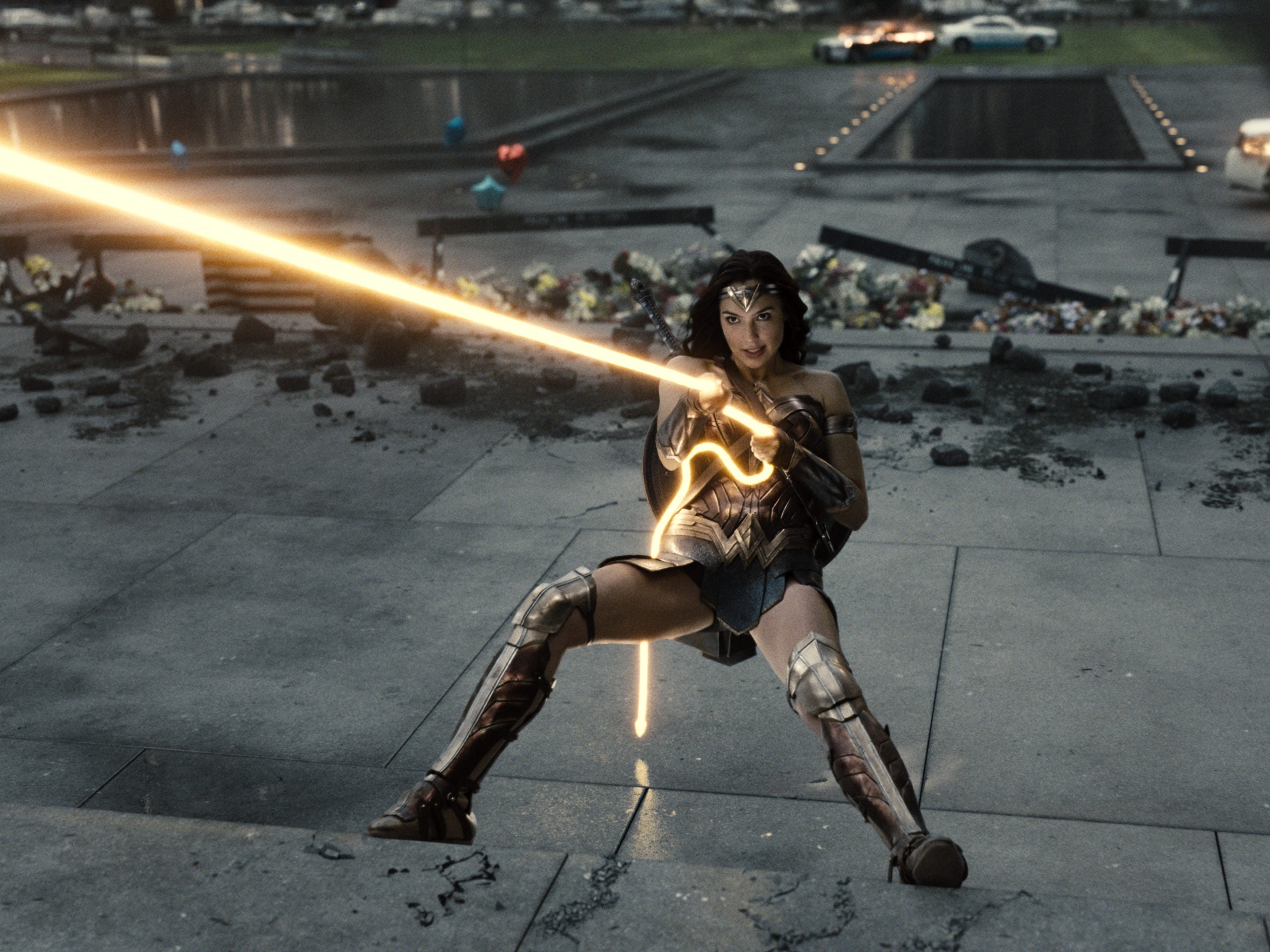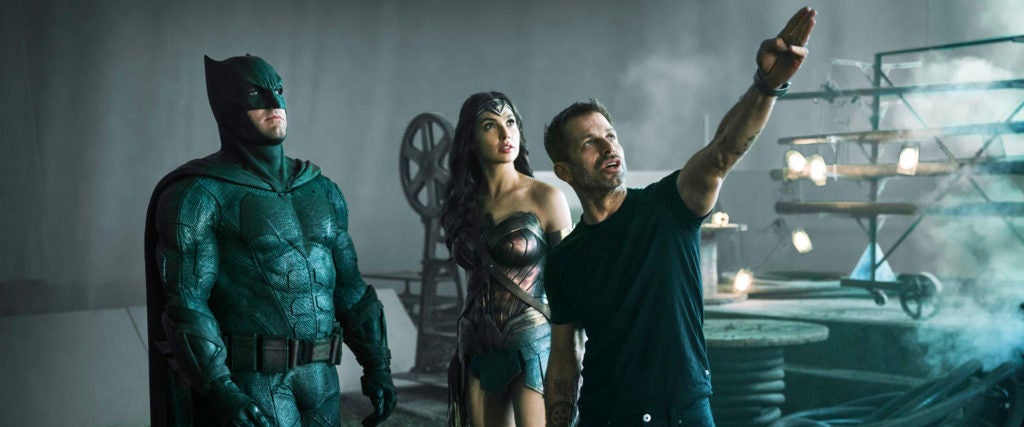Because so many people are gunning for Zack Snyder’s Justice League — assuming it will be bad, hoping it will be bad — it will probably come as a disappointment to hear that I think the much-discussed, incredibly-long comic-book colossus is… fine. Sometimes thrilling, sometimes inspired, the movie we assumed we’d never see is a visually accomplished, meticulously crafted superhero flick unlike anything that’s ever been made. In the 13 years since The Dark Knight laid the foundation for the modern why-so-serious approach to costumed characters, for better or worse, no director has ever synthesized that style with such passion as Zack Snyder. To his mind, superheroes aren’t just guys (and gals) in tights. They’re gods — complex, wounded, all-powerful gods — and never before has he sustained that vision as convincingly as he does over this story’s four hours.
And I don’t think it matters one bit.
Neither an embarrassing disaster nor a misunderstood masterpiece, Zack Snyder’s Justice League is poignantly pointless — not because it’s not good (although it isn’t good) but because Snyder has earnestly tried to rescue a woebegone project that he felt so certain needed to see the light of day. There are lots of financial reasons why this movie exists — no doubt it will draw myriad new subscribers to Warner Bros.’ streaming platform HBO Max (where it’ll debut on Thursday) — but the personal and emotional reasons are far more interesting, and also more heartbreaking.
Given an opportunity to revisit his Justice League, which was completed (and radically reshaped) by Joss Whedon before its 2017 release, Snyder has put everything into the film, proving that probably no director on the planet loves superheroes more thoroughly than he does. The Russo brothers, the guys behind Avengers: Endgame? They’re mere technicians in comparison to Snyder’s world-beating enthusiasm. Whedon? Just a glib jokester who might not be the great ally he always claimed to be. Even Christopher Nolan, who gave us the Dark Knight trilogy and has been an executive producer on Snyder’s DC films, never reached the obsessiveness on display in Zack Snyder’s Justice League.
Nothing that happens in this movie is particularly moving, and yet it’s flecked with an undeniably bittersweet quality. Snyder isn’t just after restoring his vision — he’s trying to restore an idea of superhero movies as the most essential element of our popular culture. After a year in lockdown — when life got smaller and comic-book movies mostly went on the shelf — it’s profoundly strange to see a film that takes as a given that a bunch of folks with awesome powers squaring off with some evil dude from another planet is incredibly interesting. The futility of his mission is touching because he believes in it unreservedly.
I’ve always had a weird relationship with Snyder’s movies. The only one of them I actually like is Watchmen, but nonetheless I find them fascinating — particularly Sucker Punch, one of his worst, because of how unguarded it is in putting his preoccupations, talent and clear narrative deficiencies on display. Sucker Punch is the sort of film that certain people (including Snyder, who came up with the story) think is profound, when really it’s just an exploitative riff on sexual assault and trauma — all presented in the form of sexy actresses parading around in fetching little outfits as they perform videogame-style action moves.
Whether it was Man of Steel or Batman v Superman: Dawn of Justice, his approach to DC characters was pseudo-deep, treating them with the same awed reverence as the bros in 300. But because Snyder knows how to stage a ravishing tableaux of exaggerated heroics and all-mighty feats of strength, you can’t help but get swept up in his shallow ideas about self-sacrifice and parent-child bonds. (No matter how many times it’s mentioned on social media, it will never not be hilarious that the fight-of-the-millennium showdown in Batman v Superman is resolved by the fact that their moms… have the same first name.)
Of course, with Zack Snyder’s Justice League, there is a family connection that’s legitimately tragic. One of the reasons Snyder abandoned the film was the suicide of his 20-year-old daughter Autumn. In a recent Vanity Fair profile, the director discussed his daughter’s passing and how it’s affected him. “It’s such a lightning strike in the center of this whole saga,” he said. “And in a lot of ways it has informed everything we’ve done since.” Indeed, the four-hour film is dedicated to her, and for those who will initially roll their eyes at the anguished cover of Leonard Cohen’s “Hallelujah” — dear lord, didn’t he pull that trick already? — that plays over the end credits, know that it was Autumn’s favorite song, performed by her friend Allison Crowe, who sang it at the young woman’s funeral.
“When you think about the catharsis of it, if I was a potter, I would’ve made some pottery to look for some way through this,” Snyder says in the Vanity Fair piece about returning to Justice League. “But I’m a filmmaker, so you get this giant movie.”
Being aware of that background doesn’t automatically mean that Zack Snyder’s Justice League should get a pass, but it might partly explain why he was so invested in pushing this project over the finish line. (For one thing, Autumn was apparently a big superhero fan, like her dad.) Whedon’s version of Justice League got bad reviews and failed to launch an Avengers-style series of ensemble DC superhero films, but at the time the critical consensus was that Whedon (at that point riding high from The Avengers, Buffy and all the rest) had done his best to repair a bad movie under impossible conditions and extreme time constraints. (Remember that whole deal with Henry Cavill’s digitally-erased mustache?)
No doubt partly to defend himself against that critical consensus, Snyder has excised all of Whedon’s footage (as well as shot some new material) so that it’s now 100 percent a Zack Snyder film. Empowered by the ravenous fans who launched the #ReleaseTheSnyderCut campaign, he seems to be trying to reclaim something that he lost — maybe because he knows that another thing he lost, his daughter, cannot ever be brought back.

If you saw the original Justice League, you generally know the plot of the new film — it’s merely longer. At the end of Batman v Superman, Superman (Cavill) gave his life to save the world. That death weighs heavy on people, but especially Batman (Ben Affleck), who regrets the feud that had them at odds for so long. Batman v Superman introduced the idea of a Justice League as we met Wonder Woman (Gal Gadot), Aquaman (Jason Momoa), Cyborg (Ray Fisher) and the Flash (Ezra Miller), but Justice League is where Batman and Wonder Woman need to actively recruit the other heroes to form this do-gooding team. That need proves to be urgent once Steppenwolf comes in search of the Mother Boxes, which are kinda like Marvel’s Infinity Stones, except they are boxes: In both cases, if you collect ‘em all, you rule the universe. Steppenwolf wants to use the Mother Boxes to end life on Earth — Batman and his buddies don’t want that to happen.
As someone who hasn’t seen Whedon’s version in four years, I can tell you that there are two major differences between the two cuts: (1) Snyder’s spends more time hanging out with Aquaman, Cyborg and the Flash so that we learn their backstories; and (2) it’s less funny. Also, more action scenes — and bigger, better action scenes. (Oh, and it’s not in widescreen.) Broken up into chapters, Zack Snyder’s Justice League is actually well-suited for home-viewing because you can watch it in episodes like a Netflix series. If, like me, however, you decide to gorge all four hours in one sitting, there is definitely a cumulative impact that occurs. Although nowhere near as good, Zack Snyder’s Justice League does have a novelistic heft to it — a sense of solemn loftiness that suggests a battle royale for the ages, one that will render all other superhero movies obsolete.
The thing is, I’d argue that current events — if not necessarily rendering superhero movies obsolete — have reminded us that we don’t necessarily need them the way we’ve thought we had for more than a decade. Listen, I like comic-book movies — I actually enjoyed Wonder Woman 1984, which proved to be far more divisive than I anticipated — but you don’t have to be a humorless “The pandemic will forever change how we see the world” pollyanna to watch Zack Snyder’s Justice League and think, “Oh, we’re still doing these movies, huh?”

Wonder Woman 1984 consciously evoked the 1980s, both politically and culturally, but it’s Zack Snyder’s Justice League that feels more like a relic, even though it’s set in modern times. After Avengers: Endgame, the MCU had to figure out how to follow up a film that was meant to be a culmination of everything that came before it. But the challenge was even more significant for the struggling DC Extended Universe. Whedon’s Justice League, inert and stitched-together, was a hobbled attempt to match the MCU’s firepower, and that was four years ago. In 2021, the better (but not that much better) Zack Snyder’s Justice League feels even more old hat — practically a dinosaur in terms of superhero trends.
Whether it’s the MCU branching out into television or Warner Bros. trying to make their subsequent comic-book films be more fun, the why-so-serious model of epic superhero moviemaking feels a little passé. (To make matters worse, Synder’s best film has recently been turned into a far superior, infinitely more thought-provoking HBO series that had nothing to do with him.) It’s now been nine years since Whedon changed the game by delivering The Avengers, a film with the radical notion that a movie could have a lot of superheroes in it together. Watching Zack Snyder’s Justice League duplicate the formula — right down to the Thanos-like menace of Steppenwolf — you don’t feel a nostalgic, pre-pandemic pull for the superhero blockbusters of yesteryear. You mostly think, “I’ve seen this type of event movie before — didn’t we move past this?”
Of course, this might very well be the reason why some people love the hell out of Zack Snyder’s Justice League. The DC Extended Universe has evolved past Snyder’s vision, rendering this four-hour opus a fascinating curiosity — a glimpse of what might have been if the studio hadn’t lost faith in Snyder, or if a family tragedy hadn’t understandably prompted him to put his energies elsewhere. It’s a gauntlet thrown down boldly.
But because superheroes are everywhere in our culture, the specialness of any new movie (or TV show) has been inherently lessened by years of can-you-top-this spectacles. As a result, Zack Snyder’s Justice League’s insistence that we care as deeply about the superhero world as we once did is both misguided and poignant. Snyder has spent a lot of time and talent trying to remake a moment in the culture — a precise period in which comic-book movies reigned over all — that is hard to recreate. He loves these gods, but even they can’t turn back time.

